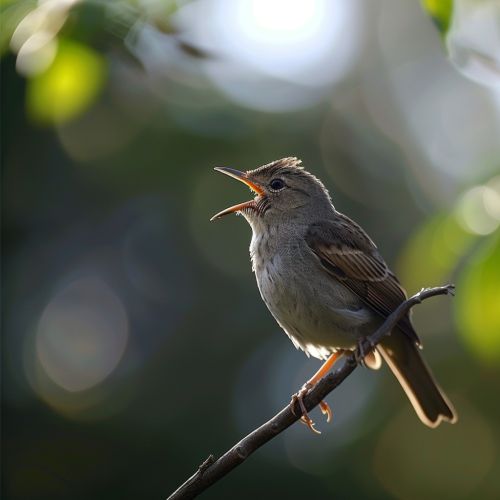Vocal Learning
Introduction
Vocal learning is a complex neurobiological process that allows an organism to modify its vocalizations based on experience. This process is not widespread among animals, being found only in certain groups such as songbirds, cetaceans, bats, and primates, including humans. This article delves into the intricacies of vocal learning, its mechanisms, and its significance in communication and social interaction.


Definition and Overview
Vocal learning can be defined as the ability of an organism to modify its vocalizations based on auditory input. This process involves the imitation of sounds, which is a form of social learning. It is a rare and complex trait that allows for the creation of shared vocal traditions and is a prerequisite for the evolution of language in humans.
Mechanisms of Vocal Learning
Vocal learning involves several stages, including the sensory learning phase, the sensorimotor learning phase, and the maintenance phase. Each of these stages involves distinct neurobiological mechanisms and structures, including the auditory cortex, the basal ganglia, and the motor cortex.
Sensory Learning Phase
In the sensory learning phase, the organism listens to and memorizes the vocalizations of a tutor, usually a parent or another adult of the species. This phase relies heavily on the auditory cortex, which processes the auditory input and forms a memory of the tutor's song.
Sensorimotor Learning Phase
The sensorimotor learning phase involves the organism attempting to imitate the memorized song. During this phase, the basal ganglia play a crucial role in comparing the organism's own vocalizations with the memorized song and making adjustments to improve the match.
Maintenance Phase
Once the organism has successfully imitated the tutor's song, the maintenance phase begins. In this phase, the motor cortex is involved in maintaining the learned song and producing it consistently.
Significance of Vocal Learning
Vocal learning has significant implications for communication and social interaction. It allows for the creation of shared vocal traditions within a group, which can serve as a form of cultural transmission. In humans, vocal learning is a prerequisite for the evolution of language, enabling the complex vocal communication that characterizes human societies.
Vocal Learning in Different Species
While vocal learning is not widespread among animals, it is found in certain groups, each of which has developed unique mechanisms and structures for this process.
Songbirds
Songbirds are perhaps the most well-known group of vocal learners. They have a specialized song system in their brain that is dedicated to the production and learning of song.
Cetaceans
Cetaceans, including dolphins and whales, are also capable of vocal learning. They use this ability to develop complex communication systems and shared vocal traditions.
Bats
Some species of bats are also vocal learners. They use vocal learning to develop echolocation calls that are unique to their group, allowing them to navigate and hunt effectively.
Primates
Among primates, humans are the most proficient vocal learners. However, some non-human primates, such as marmosets, also show evidence of vocal learning.
